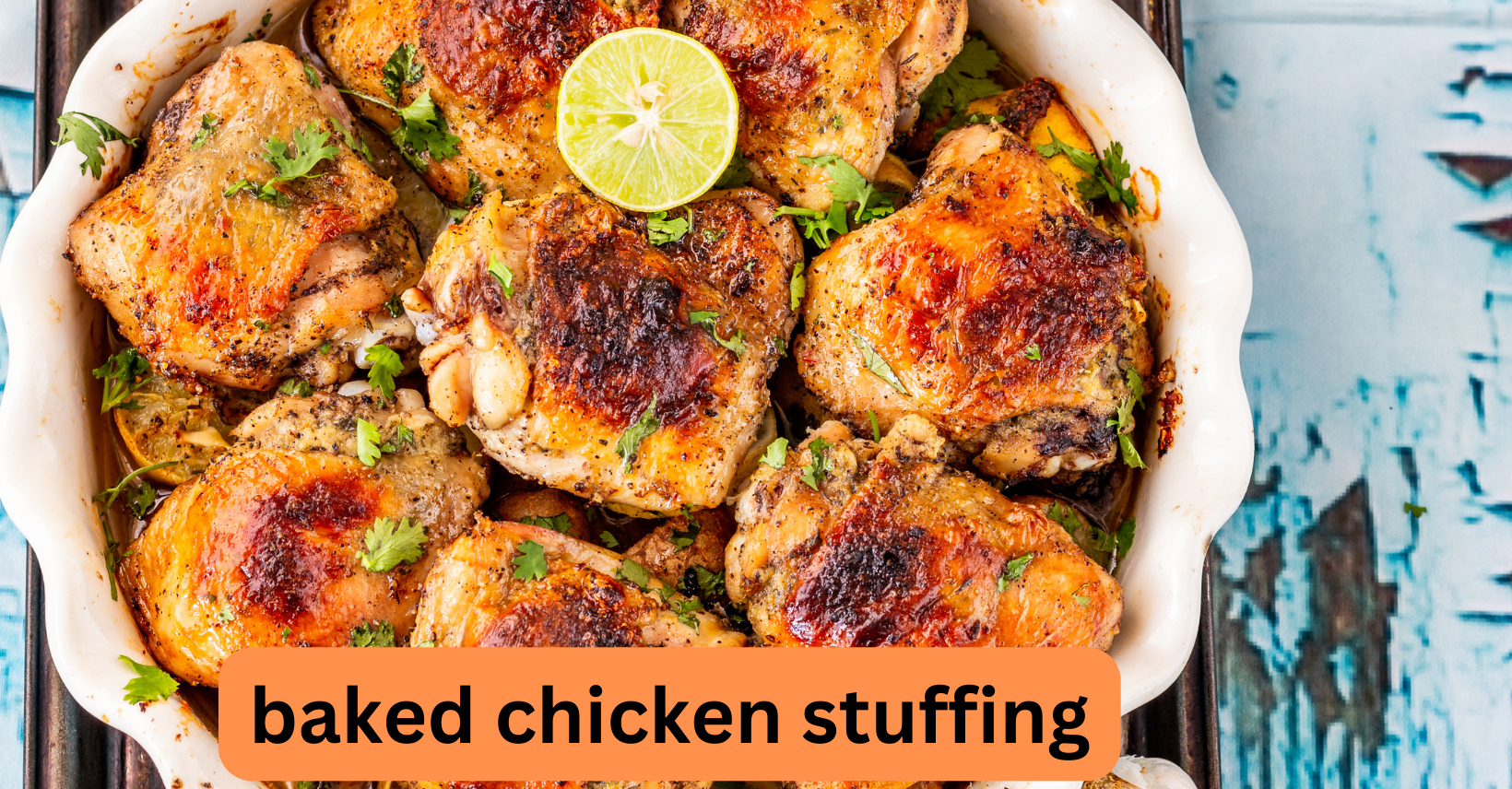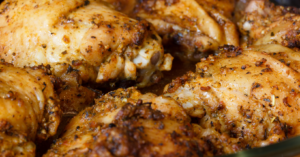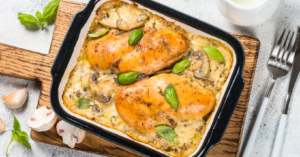 Baked chicken stuffing is a classic comfort food loved by many. Its warm, savory flavors make it a favorite for family dinners and holiday gatherings. This dish is not only delicious but also versatile. You can customize it with different ingredients to suit your taste preferences. Its popularity in home cooking is due to its simplicity and the comforting feeling it brings to any meal.
Baked chicken stuffing is a classic comfort food loved by many. Its warm, savory flavors make it a favorite for family dinners and holiday gatherings. This dish is not only delicious but also versatile. You can customize it with different ingredients to suit your taste preferences. Its popularity in home cooking is due to its simplicity and the comforting feeling it brings to any meal.
The dish typically consists of tender chicken baked with a flavorful stuffing mixture. The stuffing, often made with bread cubes, herbs, and broth, complements the chicken perfectly, creating a satisfying and hearty meal. Whether served as a main course or a side dish, baked chicken stuffing is a crowd-pleaser that evokes feelings of home and comfort.
One of the reasons for its popularity is its adaptability. You can easily modify the recipe to include your favorite vegetables, herbs, or even swap the chicken for turkey. This flexibility makes it an ideal dish for using up leftovers or catering to different dietary preferences. Additionally, it’s a convenient option for busy weeknights, as it can be prepared ahead of time and baked when needed.
Baked chicken stuffing is not just a delicious meal; it’s a reminder of home-cooked comfort. Its rich flavors and satisfying texture make it a beloved dish in many households. Whether you’re enjoying it at a family dinner or a festive holiday meal, this classic comfort food is sure to warm hearts and satisfy appetites.
Ingredients and Variations
The basic ingredients for baked chicken stuffing are chicken, stuffing mix, broth, and condensed soup. These components create a flavorful and comforting dish. However, you can easily customize the recipe by using different types of stuffing and soups. For example, you can choose from herb-seasoned, cornbread, or whole wheat stuffing mixes. Additionally, cream of chicken, cream of mushroom, or cream of celery soups are popular options.
To add more depth and variety to the dish, consider incorporating vegetables such as onions, celery, carrots, or bell peppers. Herbs like parsley, thyme, sage, or rosemary can also enhance the flavor of the stuffing. For a unique twist, try adding dried cranberries, nuts, or even sausage to the stuffing mix. These variations allow you to tailor the dish to your preferences and make it suitable for different occasions.
By experimenting with different ingredients and variations, you can create a baked chicken stuffing that is both comforting and exciting. Whether you stick to the classic recipe or add your own twist, this dish is sure to be a hit at any mea
Step-by-Step Recipe
Preparing the Chicken and Stuffing:
- Preheat your oven to the temperature specified in your recipe, usually around 350°F to 375°F.
- Season the chicken with salt, pepper, and any other desired spices.
- Prepare the stuffing according to the package instructions or your recipe. This typically involves mixing the stuffing with broth and melted butter.
- Layer the ingredients in a baking dish. Start with the chicken, then add the stuffing on top. You can also mix the chicken pieces with the stuffing for a more integrated dish.
Tips for Layering and Seasoning:
- Evenly distribute the stuffing over the chicken to ensure consistent flavor.
- Add extra herbs like thyme, sage, or parsley to the stuffing for enhanced flavor.
- Consider adding vegetables like diced onions, celery, or carrots to the stuffing for added texture and taste.
Cooking Methods
Baking in the Oven:
- Cover the baking dish with aluminum foil to keep the moisture in and prevent the stuffing from drying out.
- Bake for the time specified in your recipe, usually around 30 to 45 minutes, depending on the size of the chicken pieces.
- Remove the foil in the last 10 minutes of baking to allow the top of the stuffing to become golden and crispy.
Slow Cooker Method:
- Layer the chicken and stuffing in the slow cooker, starting with the chicken at the bottom.
- Cook on low for about 4 to 6 hours or on high for 2 to 3 hours, until the chicken is fully cooked and reaches an internal temperature of 165°F.
- Optional: If you prefer a crispy topping, transfer the cooked stuffing to an oven-safe dish and broil for a few minutes before serving.
Both cooking methods result in a comforting and flavorful baked chicken stuffing dish. The oven method provides a crispy topping, while the slow cooker method offers convenience and tender, juicy chicken.
For more detailed recipes and variations, you can visit websites like Campbell’s Kitchen, Eating on a Dime, and Meatloaf and Melodrama


